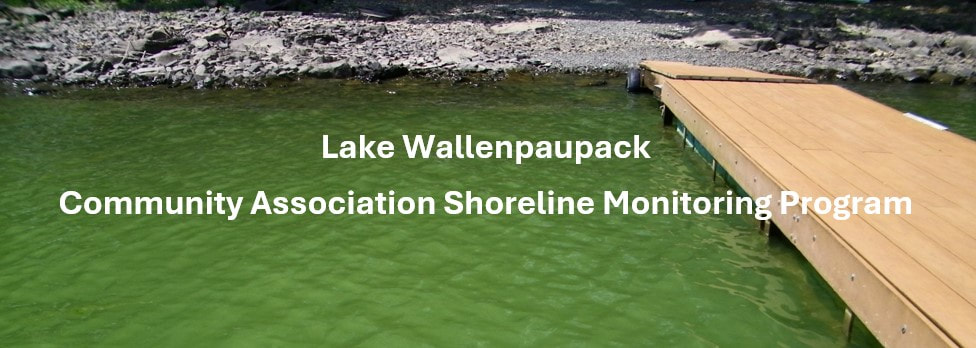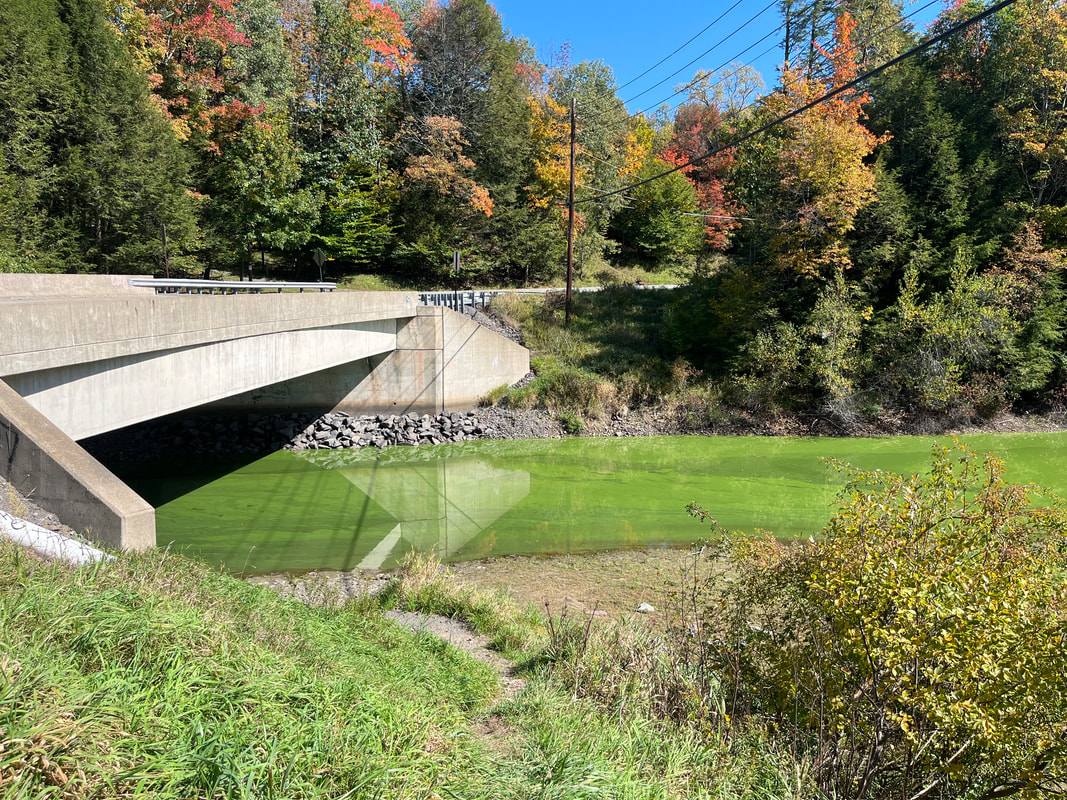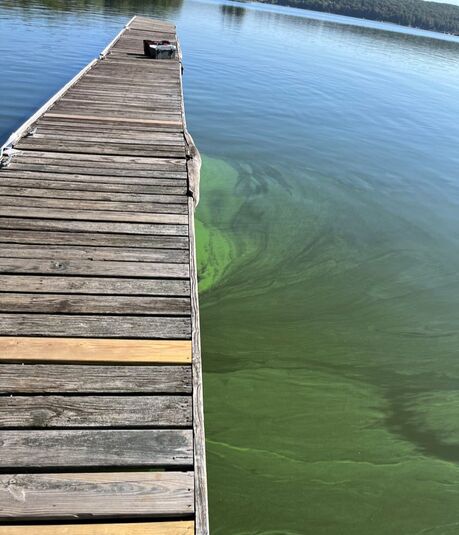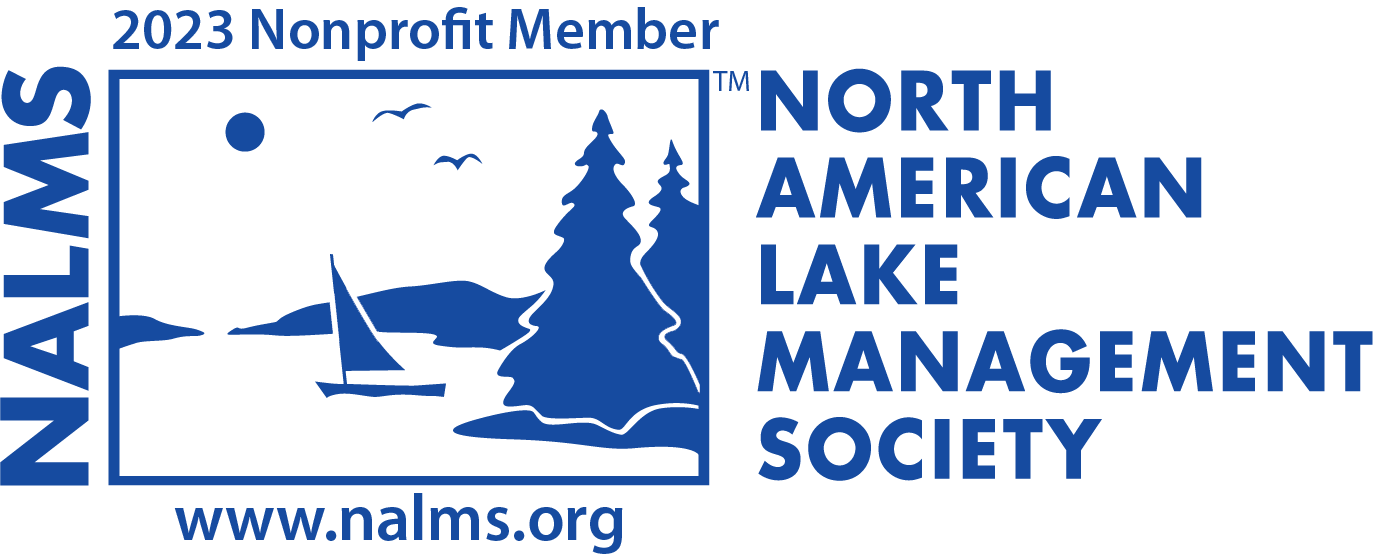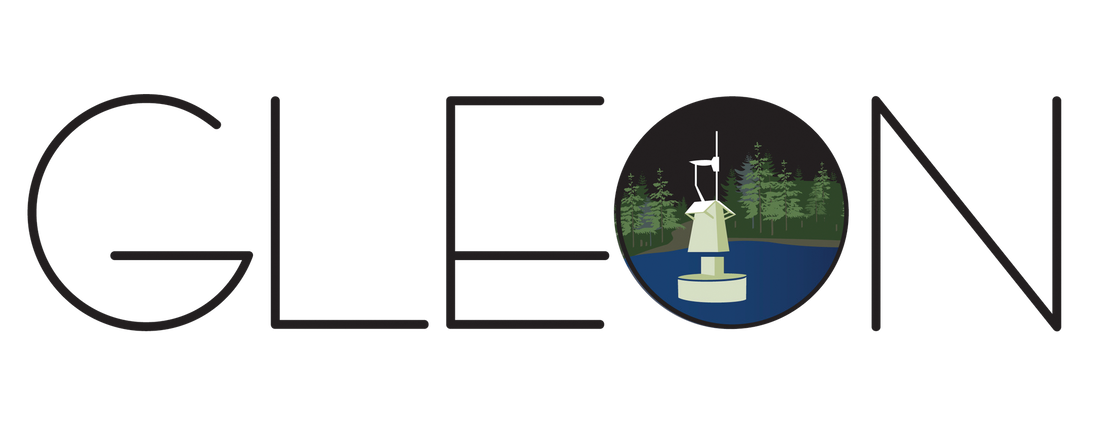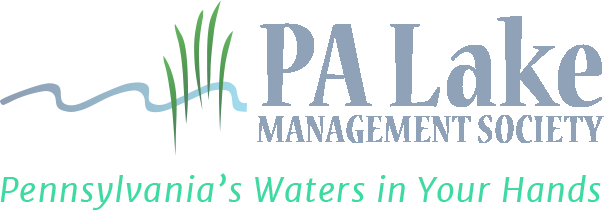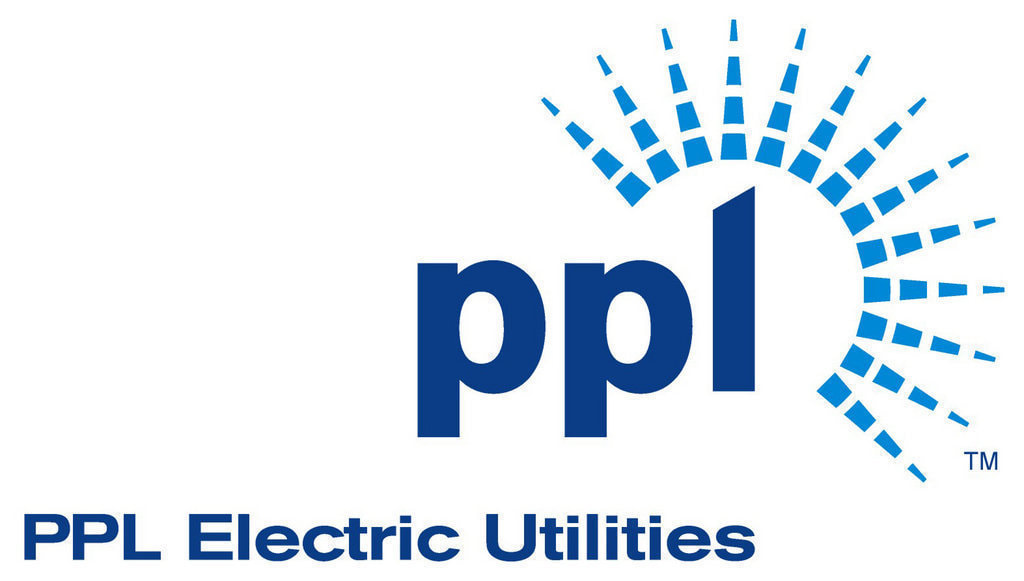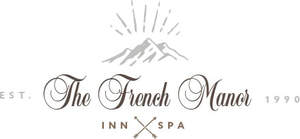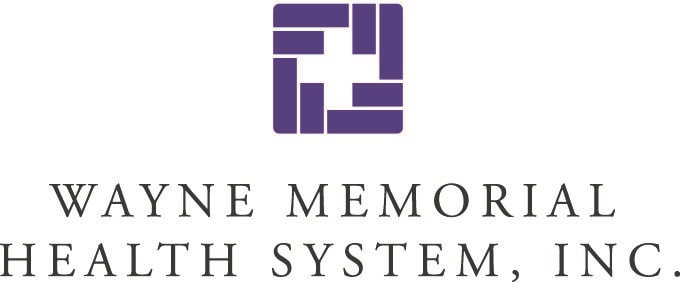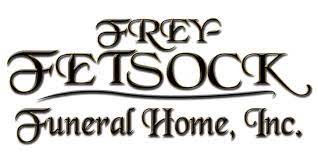Harmful Algal Blooms In Lake Wallenpaupack
|
What are harmful algal blooms and toxic cyanobacteria blooms? Algae are normal and important parts of lake food webs. They produce oxygen through photosynthesis, and they are food for zooplankton that are in turn, eaten by small fish. However, sometimes algae populations grow too fast and too much. This is called a bloom. Algal blooms that negatively impact humans or the ecosystem are called harmful algal blooms, or HABs. HABs can be unsightly, smell bad, and even cause fish kills. Cyanobacteria, sometimes called blue-green algae, are a type of bacteria that are often group with algae. They are found in almost all lake ecosystems. When cyanobacteria bloom, we call the bloom a cyanoHAB. Some cyanobacteria can produce toxins as biproduct of their metabolism. When these cyanobacteria bloom and produce toxins, this is a toxic cyanoHAB. Are HABs dangerous? HABs can cause decreased water clarity, interfere with boating and recreation, or cause a bad odor or taste. However, toxic cyanoHABs can directly impact human and pet health due to the cyanotoxins they produce. There are many different cyanotoxins that can have a range of effects on humans and pets. They can affect the liver, kidney, or cause skin reactions. Some, like saxitoxin, affect the nervous system. Health consequences of cyanotoxin exposure can be acute or may manifest over the long-term. Exposure to cyanotoxins can occur by contacting or ingesting contaminated water. Spray from boats or jet skis can aerosolize water droplets, increasing exposure risk. Do toxic cyano-HABs occur in Lake Wallenpaupack? Yes. High abundances of potentially toxic cyanobacteria occur in Wallenpaupack and detectable concentrations of cyanotoxins have been measured since 2018. However, there is no comprehensive HABs monitoring or cyanotoxin testing regimen for Lake Walllenpaupack. So, while long-lasting, lake-wide cyanoHABs are common in Lake Wallenpaupack, their toxicity remains unknown. |
HABs Monitoring and Detection
How do I know if there is a cyanoHAB near my shoreline?
Cyano-HABs are often, although not always, visible. They can appear as scums, slicks, or streaks on the water surface or as visible particles suspended in the water. Sometimes they look like spilled paint, blobs, grass clippings, or even like pea soup. They can be green, blue-green, gray-green, or other colors. When collected in a bottle or jar, the cyanobacteria tend to float to the surface. These are common, but not exhaustive, signs of a cyanoHAB.
There is no way to tell if a cyanoHAB is toxic just by looking at it. The only way to know if there are cyanotoxins present is to test the water for specific toxins. The best practice is “if in doubt, stay out!”
Does Pennsylvania or any entity monitor Wallenpaupack for cyanoHABs or cyanotoxins?
No. There are currently no mandated testing, reporting, or toxin concentration thresholds for recreational waters in Pennsylvania. These decisions are left to individuals and lake communities. There is currently no comprehensive cyanoHABs monitoring or cyanotoxin testing program for Lake Wallenpaupack.
Cyano-HABs are often, although not always, visible. They can appear as scums, slicks, or streaks on the water surface or as visible particles suspended in the water. Sometimes they look like spilled paint, blobs, grass clippings, or even like pea soup. They can be green, blue-green, gray-green, or other colors. When collected in a bottle or jar, the cyanobacteria tend to float to the surface. These are common, but not exhaustive, signs of a cyanoHAB.
There is no way to tell if a cyanoHAB is toxic just by looking at it. The only way to know if there are cyanotoxins present is to test the water for specific toxins. The best practice is “if in doubt, stay out!”
Does Pennsylvania or any entity monitor Wallenpaupack for cyanoHABs or cyanotoxins?
No. There are currently no mandated testing, reporting, or toxin concentration thresholds for recreational waters in Pennsylvania. These decisions are left to individuals and lake communities. There is currently no comprehensive cyanoHABs monitoring or cyanotoxin testing program for Lake Wallenpaupack.
How the Program Works
This program provides Wallenpaupack communities with cyanobacteria screening and cyanotoxin testing. PLEON will collect water samples from shoreline locations such as docks, boat slips, or beaches. Samples are shipped overnight to Greenwater Laboratories for screening and/or toxin analysis. Communities can customize sampling schedules and plans to suit their needs.
|
Members of the program receive these additional benefits:
|
Pick Your Schedule
We offer several sampling schedules based on community needs. Holiday Includes 3 samples. Sample ~4 days before Memorial Day weekend - 4th of July week - Labor Day weekend Biweekly Includes 10 samples. Sample holidays and ~2x per month June through September. Weekly Includes 19 samples. Sample 1x per week starting before Memorial Day through September. Rapid Response Sample in response to a bloom reported by the community |
For additional information or to enroll, please contact:
Beth Norman, Chief Scientist and Director of PLEON
94 Sanctuary Rd, Lake Ariel, PA 18436
570-689-9494
[email protected]
Beth Norman, Chief Scientist and Director of PLEON
94 Sanctuary Rd, Lake Ariel, PA 18436
570-689-9494
[email protected]

